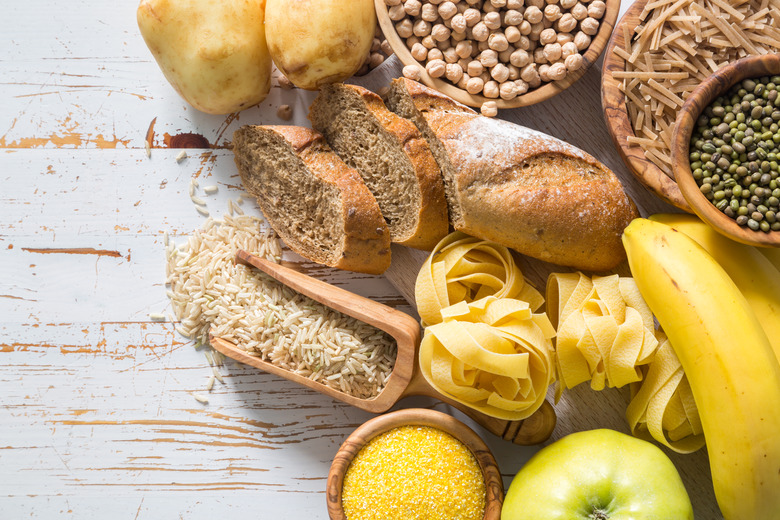What Are The Functions Of Carbohydrates In Plants And Animals?
Carbohydrates are an essential compound of all organic life on this planet. Both plants and animals use carbohydrates as a primary source of energy, which keeps the body functioning at the most basic level. Carbohydrates also fulfill other needs by helping in the synthesizing of other chemicals and providing structure for cells within the body.
Energy Source
Energy Source
Both plants and animals use carbohydrates as a source of energy essential to carrying out normal functions such as growth, movement and metabolism. Carbohydrates store energy in the form of starch which, depending on the type of carbohydrate, provide either simple or complex sugars. Complex sugars, known as polysaccharides, give a steady supply of energy while simpler sugars, monosaccharides and disaccharides, supply a quicker jolt before dissolving. Animals receive these starches through foods, especially those made from plant life such as grains and bread. Plants manufacture their own carbohydrates through photosynthesis, using the energy absorbed from light to combine carbon dioxide and water into more complex organic molecules.
Biochemical Synthesis
Biochemical Synthesis
The processing of carbohydrates has the side effect of helping with the processing of other chemicals present in the body. As carbohydrates break down, they release carbon atoms. These serve as the raw material for much of an organism's biochemistry, as the carbon can then join with other chemicals in the body. The complex polysaccharide structure of some carbohydrates, which takes a while to process, thus helps to provide carbon atoms over an extended period of time, allowing the functions to continue on regularly.
Structural Function
Structural Function
Different carbohydrates, particularly those in the form of polysaccharides, contribute to the building of cellular structure. In plants particularly, cellulose creates a solid wall around the plant cells, giving the plant its structure; carbohydrate metabolism releases chemicals which aid in fortifying this structure. Since plants have no skeleton or other weight-bearing form, these cell walls provide the framework by which plants are able to stand and extend. In a sense, it's the processing of carbohydrates which keep plants from falling over or lying flat on the ground.
Other Functions
Other Functions
In addition to the primary functions of carbohydrates, various polysaccharides fulfill other functions in organic life. Heparin, a complex carbohydrate, is commonly used as an injectable anticoagulant, where the breakdown of the sugars helps to prevent blood clots. Carbohydrates also serve as antigens, substances which trigger the creation of antibodies for the immune system. Other carbohydrates provide hormones, such as follicular stimulating hormone (FSH), which aids in ovulation, and glycoprotein, which aids in cell-to-cell interaction such as those between antigens and antibodies.
Cite This Article
MLA
Kroll, Jess. "What Are The Functions Of Carbohydrates In Plants And Animals?" sciencing.com, https://www.sciencing.com/functions-carbohydrates-plants-animals-10035477/. 19 April 2018.
APA
Kroll, Jess. (2018, April 19). What Are The Functions Of Carbohydrates In Plants And Animals?. sciencing.com. Retrieved from https://www.sciencing.com/functions-carbohydrates-plants-animals-10035477/
Chicago
Kroll, Jess. What Are The Functions Of Carbohydrates In Plants And Animals? last modified March 24, 2022. https://www.sciencing.com/functions-carbohydrates-plants-animals-10035477/
